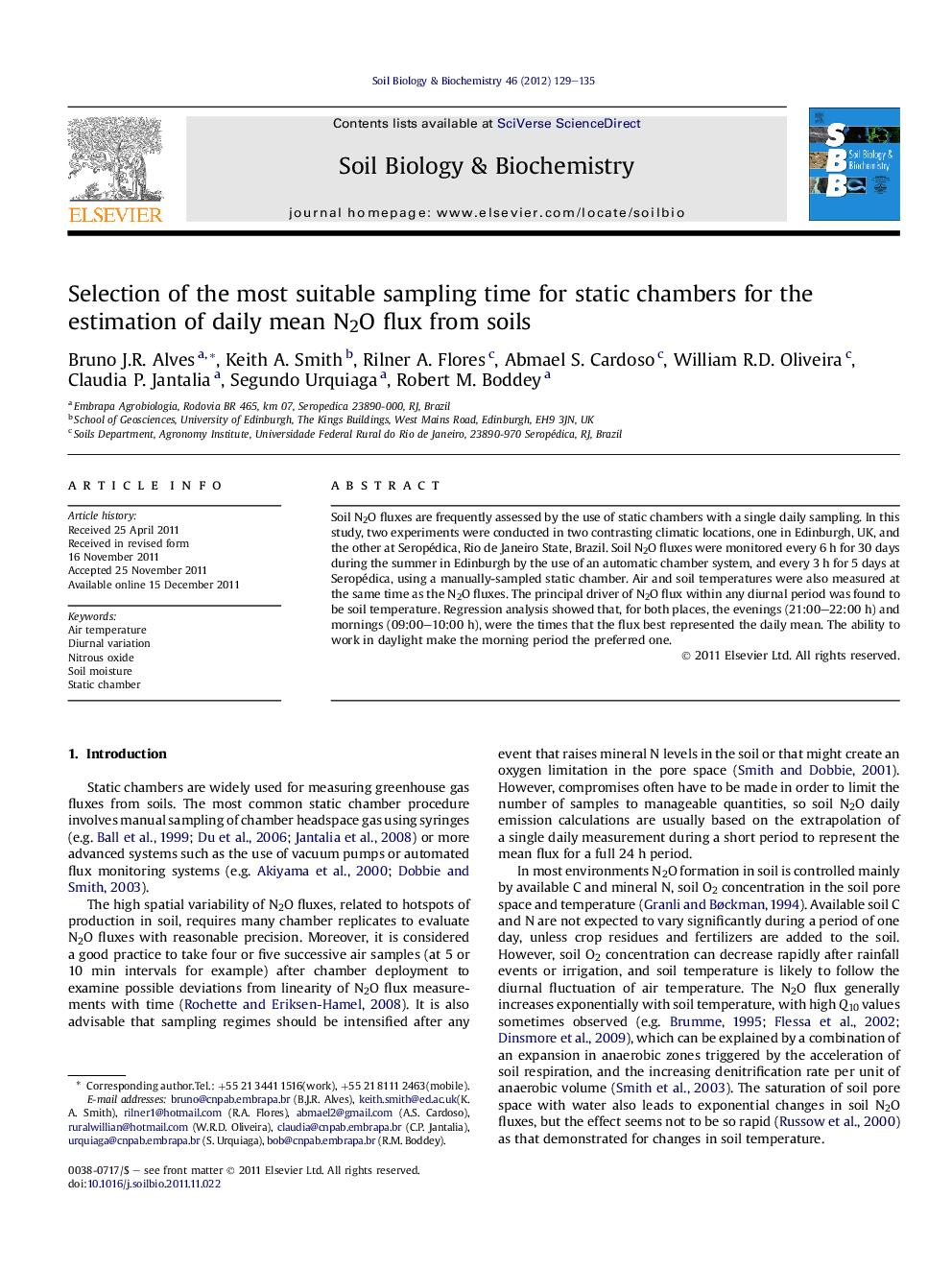| Article ID | Journal | Published Year | Pages | File Type |
|---|---|---|---|---|
| 2025014 | Soil Biology and Biochemistry | 2012 | 7 Pages |
Soil N2O fluxes are frequently assessed by the use of static chambers with a single daily sampling. In this study, two experiments were conducted in two contrasting climatic locations, one in Edinburgh, UK, and the other at Seropédica, Rio de Janeiro State, Brazil. Soil N2O fluxes were monitored every 6 h for 30 days during the summer in Edinburgh by the use of an automatic chamber system, and every 3 h for 5 days at Seropédica, using a manually-sampled static chamber. Air and soil temperatures were also measured at the same time as the N2O fluxes. The principal driver of N2O flux within any diurnal period was found to be soil temperature. Regression analysis showed that, for both places, the evenings (21:00–22:00 h) and mornings (09:00–10:00 h), were the times that the flux best represented the daily mean. The ability to work in daylight make the morning period the preferred one.
► This study is a contribution for the use of static chambers for measuring soil N2O flux. ► Temperature is the main driver of N2O flux within a diurnal cycle. ► N2O flux measured at approximately 9:00 h to 10:00 h is representative of the daily mean.
